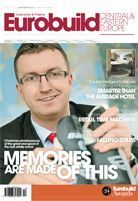It may seem incredible in a year blighted by forest fires in Russia and floods in Poland and elsewhere, but many people still prefer to stick their heads in the sand rather than face up to the fact that global warming is now occurring on an unprecedented scaleThe key-note speaker at Eurobuild Conferences’ Switch To Green forum, held at the Warsaw Hilton hotel on November 9th, was Wojciech Stępniewski, the head of the climate and energy project of the World Wildlife Fund. He opened the conference with a presentation addressed to refuting the scepticism that persists over this issue. One of the arguments employed by climate-change deniers is that any growth in global temperatures is due to natural factors, such as an increase in solar activity. But as Mr Stępniewski pointed out, this cannot itself account for the fact that 100,000 giga-tonnes of ice is lost from the polar regions every year – and if this continues at the same rate, we will be faced with an ice-free Arctic






























































